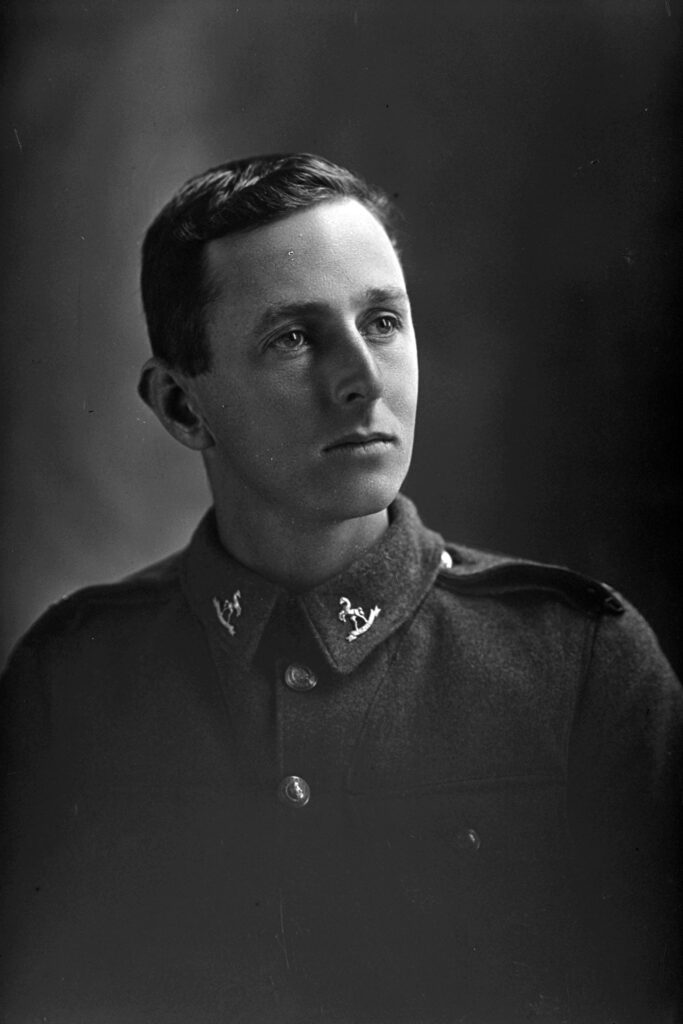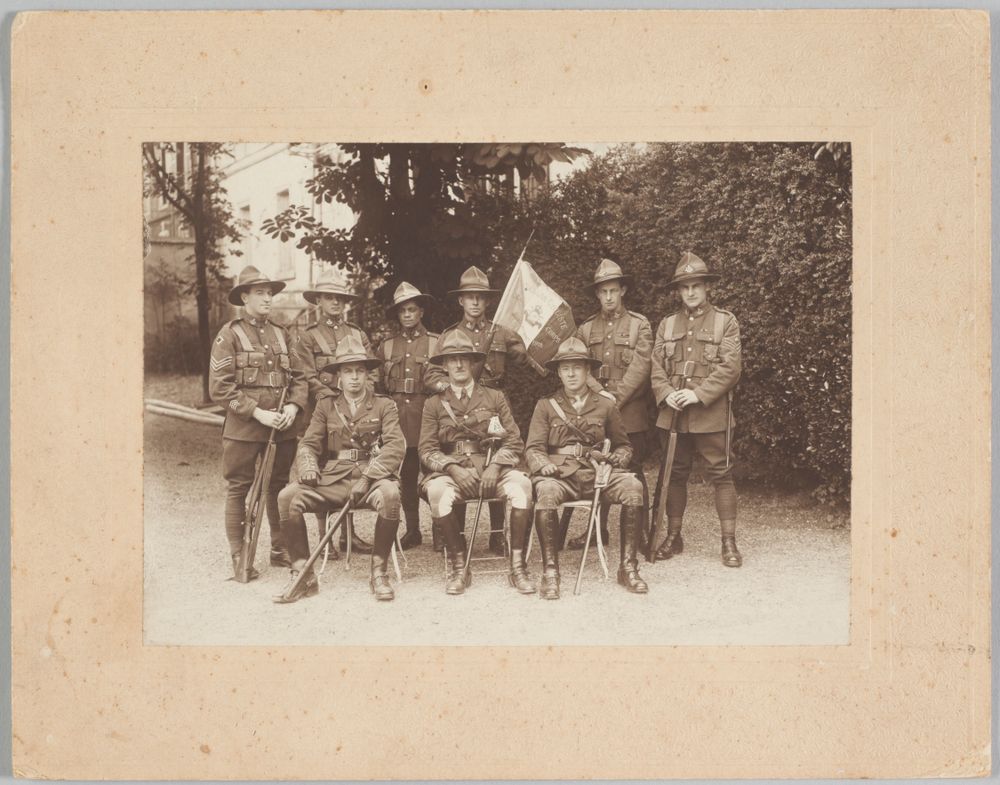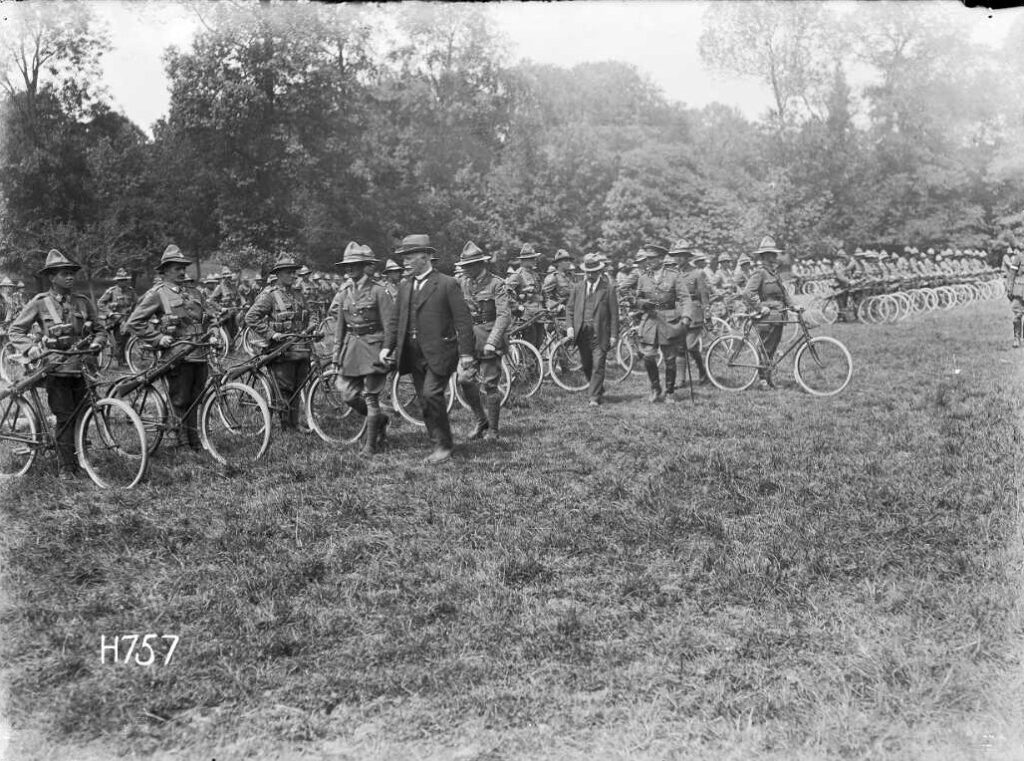When one thinks of the Great War, mobility is generally not what comes to mind. In an age of static warfare, trenches, barbed wire, thick mud, devastated and scarred landscapes, the thought of troops dedicated to mobile warfare and operations may appear somewhat out of place.
Yet mobile troops played a very active role in the First World War, including the New Zealand Cyclist Corps (NZCC) which was formed in April 1916 of men initially training to be mounted riflemen.
Why bicycles? Bicycles had already been employed for military use in various armies since the late 19th century. They allowed soldiers to travel farther than on foot, while requiring less logistical maintenance than horses. Bikes are also quieter than horses, and generally tend to remain where you last left them. The First World War created both a great demand and shortage for horses, so it was logical that bicycle units could help fill the gaps.
A Kiwi Cyclist Corps
The New Zealand Cyclist Corps arrived in France in July 1916. While they were originally attached to the New Zealand Division, they would instead spend most of their time attached alongside British units on the Western Front.
The men of the NZ Cyclist Corps proved themselves versatile in handling the many different tasks that came their way, receiving many positive remarks from senior British officers as to their conduct and performance.
From operating as reconnaissance troops and information runners, to laying over 5600 miles of telegraph cable through trenches up to three metres deep, felling trees and filling in as frontline infantry, the New Zealand Cyclist Corps were a very adaptable unit.

Mafaux – The Second Battle of the Marne
While the Cyclists were generally used in a support role, they did see notable action when the battalion to which they were attached assaulted the village of Marfaux on 22 July 1918 in the Second Battle of the Marne, suffering 91 casualties.
Despite these high losses, the cyclists captured many enemy prisoners and a battery of 75mm guns. The Regimental History record states of that day “our boys had done their job well, showing that dash and determination so well known of Colonial troops.” The remains of many of those who fell during the 22 July assault rest at the New Zealand Memorial in Marfaux.
Combatting the German Spring Offensive of 1918
The late summer of 1918 saw the German Spring Offensive turned back. Bled out after four long years of casualties, starved out after four years of a naval blockade, and with American reinforcements pouring into France, the German Empire finally started to break.
This new advance would be called the Hundred Days Offensive and result in the Armistice on 11 November. While the New Zealand Division would liberate the fortress town of Le Quesnoy on 4 November, the New Zealand Cyclist Corps would play their own role near Valenciennes.
Valenciennes
By late October 1918, the New Zealand Cyclist Corps consisted of a battalion with three companies. They knew that as the front continued to advance north-east,that the command to move forward could come quickly and at short notice.
On 11 October, the order to advance came, with the Battalion divided among separate British units and heading to the town of Bourlon, roughly 40 kilometres south west of Valenciennes, and close to 50 kilometres from Le Quesnoy.
Like Le Quesnoy, Valenciennes was occupied in the rapid German advance of August 1914, and had endured four long years of occupation. With a population of roughly 34 000 inhabitants, it was the last major French town still under German control, and would prove a major objective for this stage of the Allied advance.
The town would be liberated by our Canadian allies on 2 November, with New Zealand Cyclist Corps soldiers supporting nearby, providing reconnaissance patrols and information runners to and from British headquarters. Under artillery bombardments, facing mud, rain and bad roads, it would not be an easy month for the Cyclist Corps. Despite this adversity, they would pull through, and distinguish themselves in the process.

Charles Southey, M.C.
One New Zealander in the Cyclist Corps commended for his leadership and courage was Charles Carrington Southey. Born in Hawera in 1889, Southey worked as Headmaster of Paengora School before the war. Two years into the conflict, Southey enlisted in the New Zealand Army in 1916 as a mounted rifleman and volunteered for the Cyclist Corps after hearing the call for recruits.
Marked for his leadership capabilities, he was soon promoted to Sergeant and received the Military Medal (M.M.) at Passchendaele in 1917, before being raised to the rank of Second Lieutenant and placed in command of No. 2 Platoon.
On 1 November 1918, with British 147 Brigade’s infantry “few and hard pressed,” Second Lieutenant Southey led his men into battle in the town of Saultain, only 5 kilometres from Valenciennes and still under occupation.
Here, he and his platoon engaged three German gun teams, shooting them down and forcing the remaining gunners to take cover. He held this position until forced to retreat due to lack of support. While leading the retreat, Southey spotted an incoming German counter attack and reacted quickly, directing Lewis gun fire to their position, stopping it in his tracks.
Southey held this position until nightfall, before finally falling back behind the lines. His leadership that day earned him the Military Cross (M.C.) for bravery and leadership in the field, and two Military Medals (M.M.) would be awarded to Lance Corporal Wharton and Private McMeeking for their work on the Lewis guns.
The liberation of Valenciennes on 2 November would mark the end of four years of German occupation.
The people of Valenciennes, delighted at their liberation, hosted a ceremony on 8 November inviting representatives of all their liberators to the Grand Place.
The New Zealand Cyclist Corps was not forgotten and a detachment of No.3 Platoon went to represent the Battalion, in the presence of the Prince of Wales – the future Edward VIII.
Peace and the end of the NZCC
Following Valenciennes, the companies of the Cyclist Corps gradually continued their advance into the former German occupied territories along with a great traffic of Allied soldiers.
One common complaint consistent throughout the Corps’ records is the state of the roads with one member of No.3 Platoon complaining, “the enemy did not keep his roads in nearly as good order as we did.”
Despite the poor conditions, the Allies advanced. The citizens of the towns the cyclists entered were delighted at their liberation and they were very well received.
In towns like Aulnois, the Kiwis were hailed as “saviours because our company was the first of British troops to enter in pursuit of the fleeing enemy.”
On the 11 November, each of the Platoons were in different towns just north of the Belgian border. The records from No.3 Platoon give a highly patriotic account of the reception of news of the Armistice.
“The news of the signing of the Armistice and cessation of hostilities was received with great joy by all ranks. The thought that our object after fighting for over four years, had been gained, and our enemy, the enemy of all civilization, had been forced to his knees, gave a sense of great relief to us all, and the joy of every soldier and the inhabitants of the village was manifested by cheering, flag waving, music, etc.”

Post-War Activities
The Armistice would bring the end of the war for the New Zealand Cyclist Corps. They would not form part of the Allied Occupation Force and they spent the remainder of 1918 mainly enjoying recreational activities, football major among them.
Matches were played within the Battalion, and they also enjoyed playing against the South Africans and the New Zealand Railway Engineers, although this was noted to be “with varying results.”
Trips to visit the old battlefield of Waterloo were organised along with groups to Brussels and Lille. Concerts were held and leave was liberally given to visit the UK.
Decoration by the French
Gradually the Battalion would be demobilised and the men return to New Zealand, with a final detachment of the Cyclist Corps sent in 1919 to receive a flag – a fanion – gifted by the French at Epernay to commemorate the Second Battle of the Marne.

This was a particularly marking event for the Corps. The event commenced with a torchlight procession by the 54th French Infantry Regiment on the Saturday night, and a ceremony on Sunday, with the reception of the flag accompanied by cheers of the French townsfolk.
The officers, including Southey, were hosted by the Comte (Count) de Chandon-Moët, the then head of the world famous champagne makers Moët and Chandon.
The fanion they received – similar to a company colour or guidon – was of particular pride to the New Zealand Cyclist Corps, being the only New Zealand unit to receive such an honour from the French in the First World War.
The return home brought a return to civilian life. Southey resumed his job as a headmaster, directing various schools and serving as a Captain in the Tauranga District High School Cadets during the Second World War, before his death in June 1976.
Private David Thomas McLaggan McMeeking, M.M, who served alongside Southey on 1 November, would go on to don the black jersey and play for New Zealand as a hooker. McMeeking died at the age of 80 in August 1976.
The New Zealand Cyclist Corps arrived on the Western Front on 18 July 1916 and concluded their service on 18 March 1919. They totaled 2 years and 8 months of active service on the Front. They occupied 82 different billets and bivouacs. They moved location on average once per week. Of their Battalion, 259 were wounded, and 59 never made it home.
The Cyclist Battalions official history concludes: “With undaunted spirit they went forth to give all they had to give, and we crown them with laurel for their efforts in the Great Cause of the Empire.”
